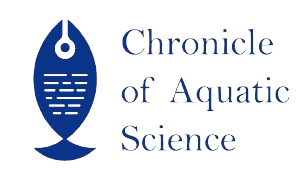| File | Action |
|---|---|
| Opportunities for Artificial Intelligence to Enhance Food Safety | Download |
- 919088951040 call us
- chronicleofaquaticscience@gmail.com Mail us
Opportunities for Artificial Intelligence to Enhance Food Safety
Popular Article
Manuscript ID: CoAS_V1IS11_05
Opportunities for Artificial Intelligence to Enhance Food Safety
Pooja Chintan Kariya* and Chintan J. Kariya
Abstract
Artificial intelligence (AI) represents Advancements in technology within the food industry have significantly progressed over the last few decades, As the global population continues to expand, accompanying the rise in food needs persists. The complexity and versatility of today's food requires utilizing contemporary technology to uphold top-tier food quality, safeguarding consumers against illness. AI enables the effective use of information by using data to create indicators that identify problems before they arise. This review aims to highlight various implementations of artificial intelligence in food production and associated domains, with the objective of enhancing food safety control Ensuring that the primary expectation of consumers is that food production occurs under hygienic conditions.
Keywords
Artificial Intelligence, Food Safety, Risk Prediction, Public Health and Future of AI
References
Krittanawong C, Zhang H, Wang Z, Aydar M, Kitai T (2017) Artificial Intelligence in Precision Cardiovascular Medicine 69(21):2657–2664.
Hamet P, Tremblay J (2017) Artificial intelligence in medicine. Metabolism: Clinical and Experimental 69, S36–S40.
Elferink M, Schierhorn F (2016) Global demand for food is rising. Harvard Business Review 7(4):1–7.
Garver K (2018) Examples of artificial intelligence in the food industry.
Utermohlen K (2019) Applications of artificial intelligence in the food industry
Rahman MS, Rashid MM, Hussain MA (2012) Thermal conductivity prediction of foods by Neural Network and Fuzzy (ANFIS) modelling techniques. Food Bio prod Process 90(2):333–340.
Sun D-W. “Inspecting pizza topping percentage and distribution by a computer vision method”. Journal of Food Engineering 44 (2000): 245-249.
Patel K K., et al. “Machine vision system: a tool for quality inspection of food and agricultural products”. Journal of Food Science and Technology 49 (2012): 123-141.
McAllister P., et al. (2018) “Combining deep residual neural network features with supervised machine learning algorithms to classify diverse food image datasets”. Computers in Biology and Medicine 95: 217-233.
McMeekin T A., et al. (2006) “Information systems in food safety management”. International Journal of Food Microbiology 112: 181-194.
Topoyan M. (2003) “Analysis of hazard analysis and critical control points (HACCP) and ISO: 9001:2000 quality management system relations in food industry”. Dokuz Eylül University Institute of Social Sciences, Master’s thesis: 153.
Kurt, E. (2019) “Investigation of work accidents in dried fruits factory”. OHS Academy 2: 88-118.
Hamet P, Tremblay J (2017) Artificial intelligence in medicine. Metabolism: Clinical and Experimental 69, S36–S40.
Elferink M, Schierhorn F (2016) Global demand for food is rising. Harvard Business Review 7(4):1–7.
Garver K (2018) Examples of artificial intelligence in the food industry.
Utermohlen K (2019) Applications of artificial intelligence in the food industry
Rahman MS, Rashid MM, Hussain MA (2012) Thermal conductivity prediction of foods by Neural Network and Fuzzy (ANFIS) modelling techniques. Food Bio prod Process 90(2):333–340.
Sun D-W. “Inspecting pizza topping percentage and distribution by a computer vision method”. Journal of Food Engineering 44 (2000): 245-249.
Patel K K., et al. “Machine vision system: a tool for quality inspection of food and agricultural products”. Journal of Food Science and Technology 49 (2012): 123-141.
McAllister P., et al. (2018) “Combining deep residual neural network features with supervised machine learning algorithms to classify diverse food image datasets”. Computers in Biology and Medicine 95: 217-233.
McMeekin T A., et al. (2006) “Information systems in food safety management”. International Journal of Food Microbiology 112: 181-194.
Topoyan M. (2003) “Analysis of hazard analysis and critical control points (HACCP) and ISO: 9001:2000 quality management system relations in food industry”. Dokuz Eylül University Institute of Social Sciences, Master’s thesis: 153.
Kurt, E. (2019) “Investigation of work accidents in dried fruits factory”. OHS Academy 2: 88-118.
Utlu Z and Yılmaz G. (2019) “Occupational health and safety impact of technological developments in the food manufacturing sector”. Anadolu Bil Vocational School Journal 44: 1-6.
Mei X, Lee HC, Diao K-Y, Huang M, Lin B, et al. (2020). Artificial intelligence-enabled rapid diagnosis of patients with COVID-19. Nat. Med. 26(8):1224–28.
N. Patelli and M. Mandrioli, (2020) “Blockchain technology and traceability in the agrifood industry,” Journal of Food Science, 85(11):3670–3678.
GAG, Digitising Agrifood, BCFN Foundation, Parma, Italy, 2021
Mei X, Lee HC, Diao K-Y, Huang M, Lin B, et al. (2020). Artificial intelligence-enabled rapid diagnosis of patients with COVID-19. Nat. Med. 26(8):1224–28.
N. Patelli and M. Mandrioli, (2020) “Blockchain technology and traceability in the agrifood industry,” Journal of Food Science, 85(11):3670–3678.
GAG, Digitising Agrifood, BCFN Foundation, Parma, Italy, 2021
- Published online
- 30th April, 2024
How to Cite the Article
Kariya PC and Kariya CJ. Opportunities for Artificial Intelligence to Enhance Food Safety. Chron Aquat Sci. 2024;1(11):32-36
Copyright
This is an open-access article distributed under the terms of the Creative Commons Attribution License (CC BY). The use, distribution or reproduction in other forums is permitted, provided the original author(s) and the copyright owner(s) are credited and that the original publication in this journal is cited, in accordance with accepted academic practice. No use, distribution or reproduction is permitted which does not comply with these terms.

Opportunities for Artificial Intelligence to Enhance Food Safety


